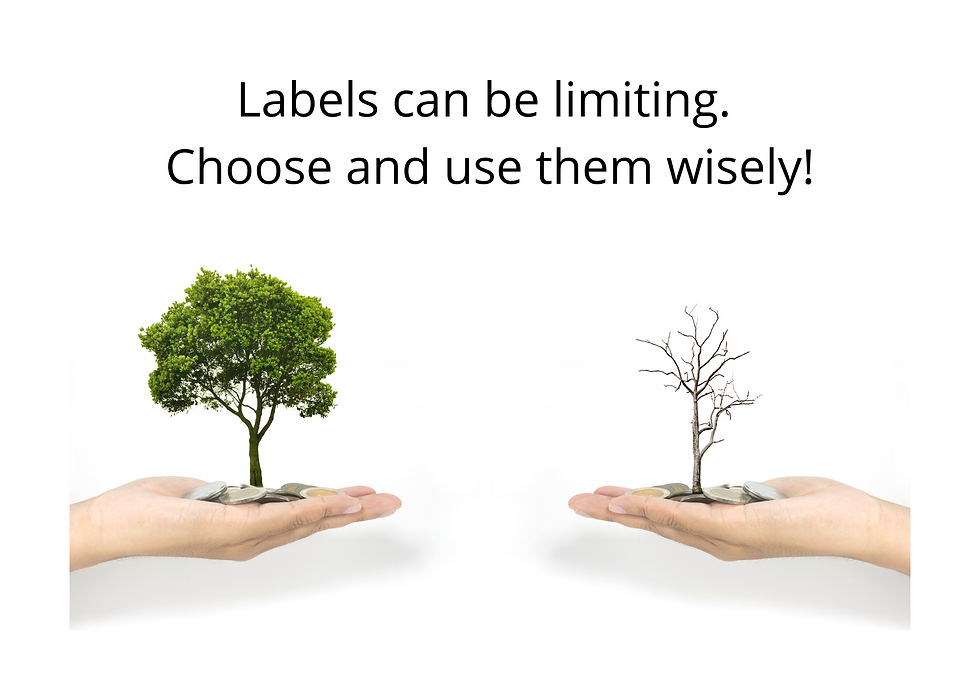From Overwhelm to Clarity in 10 manageable steps
- Mary Ely

- Jul 1, 2022
- 6 min read
Updated: Aug 9, 2022

If you’re reading this, then there’s a good chance that you’re feeling overwhelmed or you are familiar with that horrible feeling of being mentally buried by the sheer volume or complexity of something.
It can feel like a cocktail of negative emotions and generally, there’s a large dose of fear, anxiety or outright panic in the mix!
Which is not the state to be in when you need to think well and find clarity so you can decide what to do next.
So here are my
10 steps to get you from overwhelm to clarity
Give yourself permission to take time out to do this process
Prepare
Get it all out of your head
Let go of the emotion and take back control of your head
Put your curious head on
Make the uncertain more certain
Let go of the uncontrollable
Brainstorm options for the controllable
Develop your plan
Take the first small step
1. Give yourself permission to take time out to do this process.

When you’re overwhelmed it’s tempting to get going on something. Anything in fact!
But that’s actually a riskier strategy than taking time out to think things through, as
You’re not thinking straight when you’re overwhelmed
…so whatever you do, you’re unlikely to do it to the best of your ability
The ‘anything’ you choose, might not be the most useful thing to start with
In your panic, you are more likely to choose the easiest and quickest thing to deal with when really you’d be better off starting with the less easy, big thing…but in the state you’re in, you may not see that or be able to contemplate doing it.
...either of which may lead to more problems later and more overwhelm.
2. Prepare

As you can see from the list of steps, this process involves some brainstorming, so gather up the tools and go to a place that will help you do that.
For example
Shut yourself away in a quiet office.
Take control of the dining table.
Gather up a stash of multi-coloured post-it notes or small bits of paper that you’ll be able to move around easily.
Open up your favourite mind-mapping or brainstorming software (e.g. scapple or mindmeister).
Get to a whiteboard or get yourself some magic whiteboard (which I love!).
3. Get it all out of your head

Write down ALL of the things that are rattling around inside your head which are causing you to feel overwhelmed (your ‘reasons’) and the emotion attached to them.
And you’ll be dealing with each reason separately later, so leave room for notes around each reason, or have a separate post-it note or small piece of paper for each.
So, for example. I’m feeling overwhelmed because of
Reason 1 which is making me feel anxious
Reason 2 which I’m afraid of
Reason 3 which I’m panicking about
Reason 4 which I feel overwhelmed with guilt about
Reason 5 which I’m angry about
Reason 6 which I feel hurt by
Reason 7 which I’m sad about
…
Whilst overwhelm is generally a mixture of anxiety, fear and panic, some other negative emotions can be mixed in too and it’s helpful to call them out and give them a name so you can do something about them in the next step.
4. Let go of the emotion and take back control of your head

You may find that just getting everything out of your head restores calm and allows you to feel in control of your head again.
But if not, here are some more options for taking back control of your head
Let the emotion out safely (not always possible ‘in the moment’): scream, cry, hit a cushion, have a rant, swear profoundly for a while...whatever feels right.
Breathe deeply for a few minutes.
Imagine stepping out of your body, creating some distance between you and the situation, so you see yourself in it and can look at things objectively.
Have a chat with yourself, as you would if you were helping a friend calm down.
Find some space and gaze at the sky for while.
Spend 10 minutes doing something distracting – go for a short walk, do some yoga, meditate, listen to some music.
Check out my other blogs on negative emotions to see if what I’ve learnt can help you get rid of the emotions you’re feeling: Experiment with my core learning that helps me get rid of most negative emotions most of the time and the things that help me specifically with Anger and hurt, Sadness, Fear and anxiety, and Guilt.
And if you learn anything or have any ideas about any of the reasons you’ve listed in step 1, add to your notes for each.
Hopefully by now, you’ll be feeling at least a bit calmer, so it’s time to….
5. Put your curious head on

Get yourself into the mindset of curiosity.
The mindset you have when you’re about to tackle an interesting puzzle. A mindset where you can come up with options and find solutions.
You can do that by thinking about other scenarios where you become curious and are able to do that. Or imagine you’re someone else who you think is good at that.
Then act as if that’s you right now. Pretend you’re that person or that version of you.
For example….
What do I do when it’s time to get me, the kids and the dog ready for the day?
How did I go about solving that problem at work the other day?
How can I find a way through this computer game?
What are my options for my next chess move?
Where might that jigsaw puzzle piece go?
How did I decide what to buy, what to wear or what to do at the weekend?
How do I go about helping other people solve their problems?
What if I were on a tv show - some celebrity challenge or game show?
6. Make the uncertain more certain

What’s uncertain in your list of reasons and how can you make them more certain?
What are the most likely outcomes?
What would be your rough plan for each different outcome?
What can you do to get clarity and/or when are you likely to get that?
Is there anything you can do about them now or do you need to treat them as uncontrollable for a while?
What plan of action does that imply?
7. Let go of the uncontrollable

Split your list into things that you can and things you can’t control.
Break your reasons down into smaller parts if you necessary so you can do this.
Double-check the things that you think you can’t control.
What could you do to feel even slightly more in control?
What if you assumed control? What would that look like?
And once you’ve done that, commit to letting go of the things you can’t control.
Find a way to convince yourself to stop thinking about them.
When you’ve found something that works keep it somewhere (like on your phone) where you know you can refer to it when you’re tempted to dwell on the uncontrollable.
For example, I remind yourself that
Worrying about those things won’t increase my control over them or influence them in any way so it’s pointless dwelling on them.
Dwelling on those things will just slow me down, making everything else harder to do. So STOP and shift my focus onto the things I can control instead.
8. Brainstorm options for the controllable

Come up with a strategy and options for each thing on your list
Challenge yourself to reduce the list
What can you reasonably do? What will you need to de-prioritise or say no to?
How important and how urgent is each one really?
What would you take out if you could only keep 50% for now or had just 20% of the time you think you have?
What could you push out?
Is it really necessary or could you just delete it forever?
What could someone else do? How could you persuade them to do that?
Brainstorm options for dealing with the ones that are left.
What choices do you have?
What action could you take?
What have you missed that would make this easier to deal with?
Who could help?
Can they be broken down into smaller, more manageable chunks?
What are the dependencies between them? What order or plan does that imply?
9. Develop your plan

Based on your analysis, what’s a reasonable plan?
If one doesn’t emerge get even more ruthless with what you will do and what you will ditch, defer or delegate.
Make sure your final plan includes some specific self-care activities.
When you’ve got a lot going on, it’s crucial that you build in time for self-care so you can give your body and mind a break and restore your energy and allow you to keep going.
10. Take one small step

Make a start on the first part of the first thing in your plan.
Commit to doing it for just 20 minutes.
Have a 10-minute break
Commit to another 20 minutes.
Repeat for as long as you have right now.
So there you have it,
10 steps to make the switch from overwhelm to clarity as simple, manageable and comfortable as possible!
And if you want to make the process even easier, then working with a coach is a great option.
A coach can provide a different perspective and prompt you into expanding your thinking beyond any internal barriers that might be holding you back.
If you’d like to explore coaching with me, you can click here to book a free call.
And if you'd like to try out my monthly emails that provide a roundup of my blogs as well as other insights, you can sign up here.






Comments